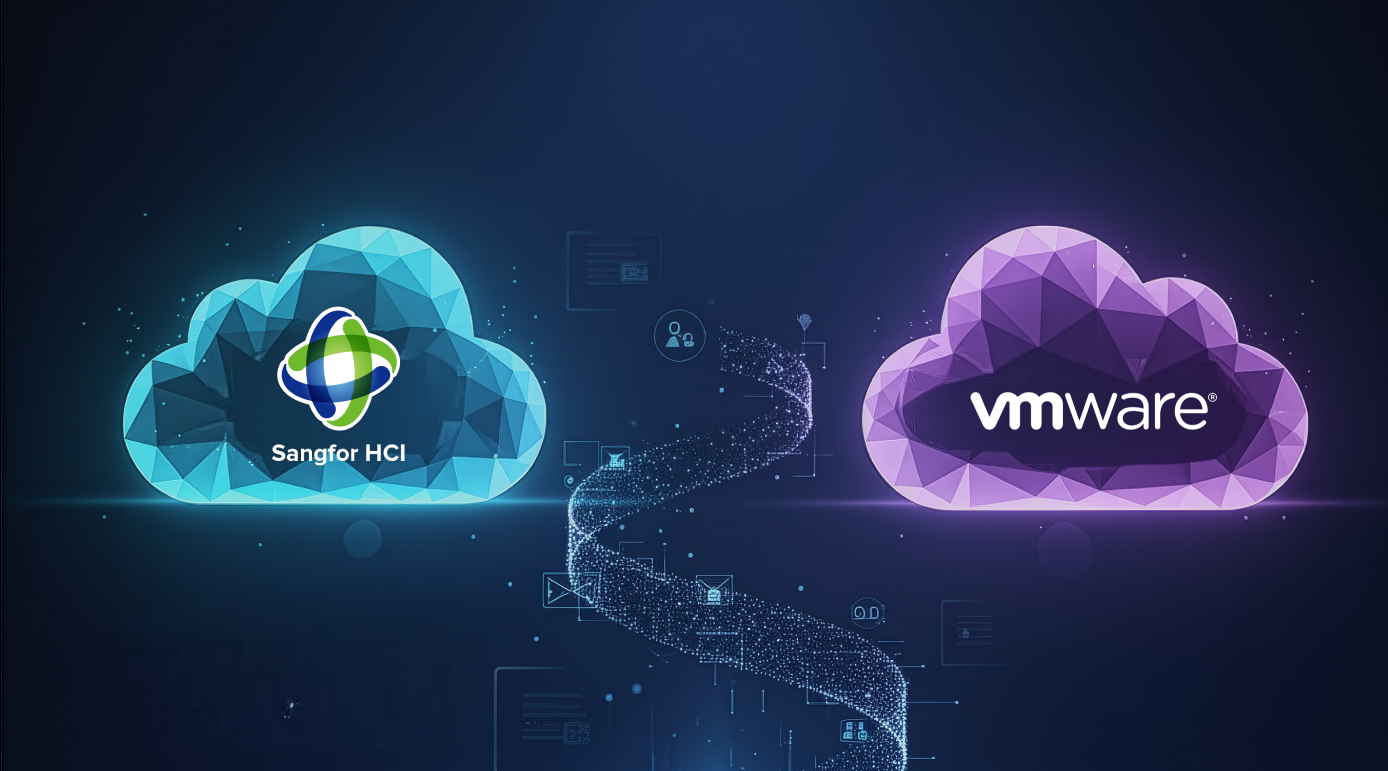Sangfor HCI vs VMware: A Comprehensive Comparison
March 12, 2025

At the heart of any hyperconverged infrastructure is the hypervisor, which directly drives performance, scalability, and manageability.
· Sangfor aSV: Purpose-built for integrated HCI deployments, aSV delivers enterprise-class virtualization features that surpass VMware vSphere Standard and align closely with Enterprise Plus. It supports high VM density, intelligent resource scheduling, and seamless scalability — all from a unified, intuitive interface with minimal complexity.
· VMware vSphere: The Enterprise Plus edition offers a rich feature set (vMotion, DRS, distributed switches), but at a premium. The Standard edition lacks many advanced capabilities, forcing costly upgrades to achieve true enterprise functionality.
Key Insight: Sangfor aSV offers VMware Enterprise Plus-level capabilities, but with simplified licensing and a lower total cost of ownership.
Networking: Sangfor aNet vs VMware NSX
Networking is another critical differentiator in HCI platforms.
· Sangfor aNet: A fully integrated network virtualization platform that lets IT teams build distributed switches and routers using an intuitive, diagram-driven interface — similar in feel to Cisco Packet Tracer. This lowers complexity and democratizes advanced networking.
· VMware NSX: Extremely powerful but requires additional licensing and advanced expertise. Deployment often demands significant investment in both time and skills.
Key Insight: Sangfor simplifies advanced networking, while VMware NSX remains complex and costly.
Storage: Sangfor aSAN vs VMware vSAN
Data storage underpins performance and business continuity.
· Sangfor aSAN: Native, fully distributed, software-defined storage built into the HCI stack. Delivers high availability, scalability, and performance optimization without additional licensing.
· VMware vSAN: A proven solution, but treated as an add-on requiring separate licensing and integration.
Key Insight: Sangfor integrates storage natively, cutting both cost and deployment complexity compared to VMware’s bolt-on model.
Security: A Built-in Advantage for Sangfor
Security is where Sangfor creates clear separation. While VMware depends heavily on third-party appliances, Sangfor embeds a complete suite of security solutions directly into its HCI:
· Virtual Next-Gen Firewall (NGFW with WAF, IPS, and vulnerability scanning)
· Virtual Internet Access Gateway (bandwidth shaping, traffic control, auditing)
· Network Detection & Response (NDR)
· Virtual Load Balancer
· Cloud-Native Endpoint Security (aSec)

.png)
.png)
.png)
